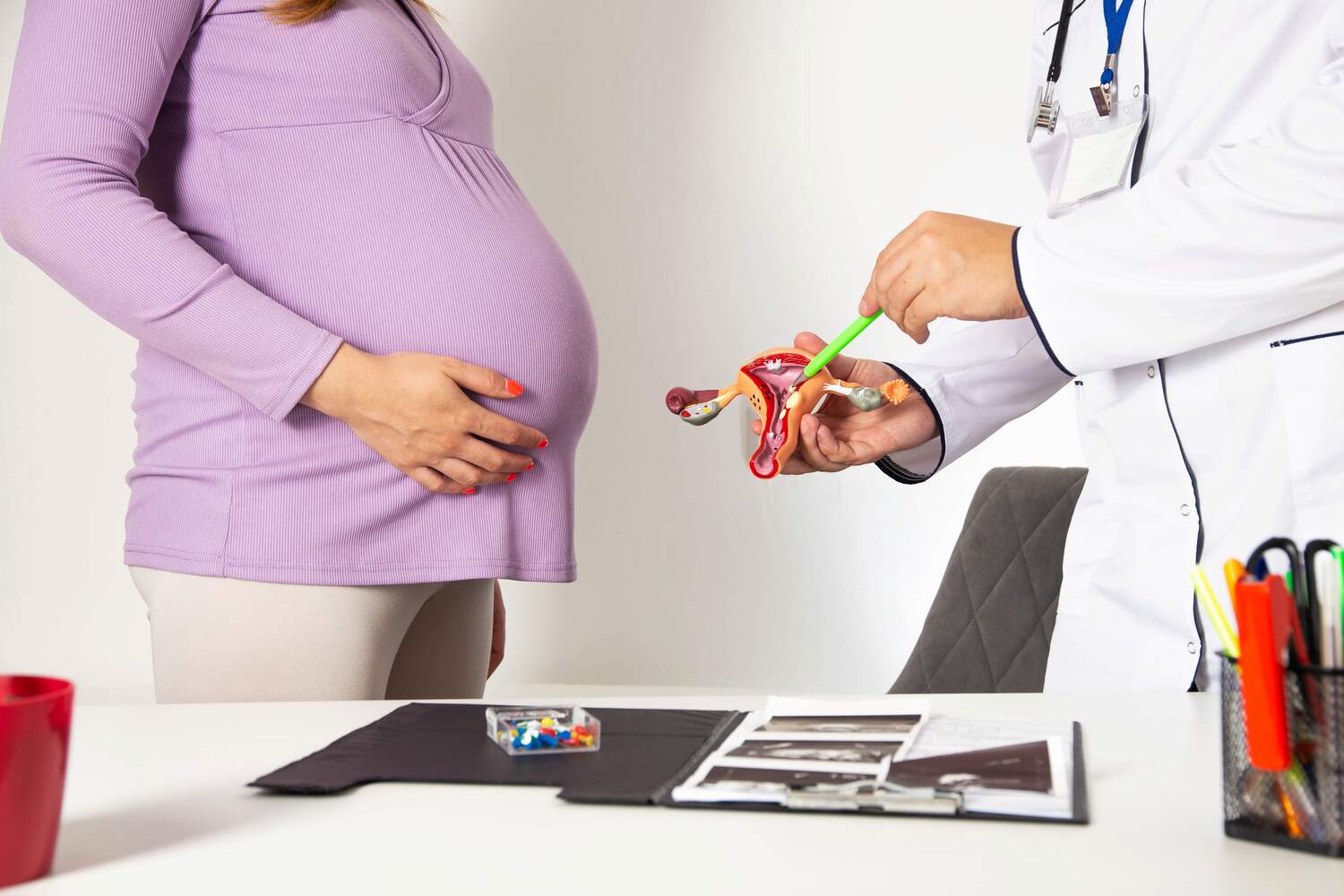
Being a woman, giving birth is the most extraordinary feeling in the world for her. The phase is a new beginning in every woman’s life. Along with happiness and joy, they have to endure a lot of pain and difficulties during childbirth, such as vaginal tearing.
Vaginal tearing happens due to many reasons. So, at what level and stages does it occur, and how to prevent vaginal tearing during childbirth? We will shed light on all these questions and much more in this article.
In This Article
- What is Vaginal Tearing?
- Is it Common to Have Vaginal Tearing During Delivery?
- Causes of Vaginal Tearing During Delivery
- Types of Vaginal Tears
- Can We Prevent Vaginal Tears During Childbirth?
- Can an Episiotomy Help?
- Tips For Caring For Vaginal Tears Post-Delivery
- FAQ’s
What is Vaginal Tearing?
Vaginal tearing, also called perineal laceration, is a tear in the vaginal tissue (1). This tear can happen anywhere in the vagina- labia, vagina, and perineum. The perineum is the tissue between the vaginal opening and the anus.
Vaginal tearing can happen while pushing the baby out during a normal delivery. The vagina stretches enough to accommodate the baby’s head during a normal delivery. Sometimes, though, the vagina cannot stretch beyond a certain point. In such a scenario, a tear may happen.
Is it Common to Have Vaginal Tearing During Delivery?

Vaginal tearing is common in first-time mothers. It is generally less common for women who have already delivered a baby. However, it is normal for the perineum to tear at a certain level during delivery. These vaginal tears can even occur in the vulva. According to research, around 53-89 percent of women experience vaginal tears during their first delivery (1a).
Causes of Vaginal Tearing During Delivery
Vaginal tears can happen for several reasons. When a tear happens during delivery, it is called an obstetric tear. Here are some causes of vaginal tearing
1. The Size of Your Baby
The larger the baby, the more the chances of the perineal tear (2). If the mother is diabetic the chances of the big-sized baby also increase (3).
2. Shoulder Dystocia
Shoulder dystocia can happen when the delivery becomes complicated as your baby’s shoulder gets stuck inside after the head comes out (2a).
3. The Prolonged Second Stage of Labor
During the second stage of labor, you start to push your baby down the vagina. When this stage becomes longer than expected the chances of tearing increase (4).
[Read : Pushing (Bearing Down) The Baby]
4. If It is Your First Vaginal Birth
This is the most common cause that increases the risk of tearing. The tissues in the vaginal opening remain tensed and tight and won’t dilate enough during the first delivery (unlike in the second or third delivery) increasing the risk of tearing (2b).
5. Abnormal Position of Your Baby
If your child is in the breech position during delivery or takes the posterior positioning, it increases the risk of vaginal injury (2c).
6. Assisted Vaginal Delivery
Forceps or vacuum-assisted vaginal delivery are associated with increased vaginal tearing. Comparatively, vacuum-assisted vaginal delivery causes less tearing than forceps-assisted delivery because the vacuum extractor does not require wide passage to operate. Forceps-assisted deliveries often cause 3rd or 4th-degree vaginal tearing. The chances of assisted delivery increase during induced labor (2d).
[Read : Assisted Vaginal Deliveries]
7. An Earlier Episiotomy
If you have had an earlier delivery wherein you were given an episiotomy, chances are that you will likely have a tear again(1b). Also, if your vagina and anus are not apart as an average woman, you may get tears during delivery.
Apart from these, there are several other causes of vaginal tearing as well. Some reasons for non-obstetric vaginal tears are- penetrative sex, improper insertion of tampons, insertion of foreign objects in the vagina, atrophic vagina, etc.
Types of Vaginal Tears

There are four types of vaginal tears that can occur during labor and delivery. The classification depends on the severity of the tearing. The different types of vaginal tears are (1c).
1. First-Degree Tears
These tears occur on the perineal skin. They are superficial in nature and are restricted to the first layer of the skin around the vaginal and perineal surfaces. It is a small wound that heals and doesn’t require any stitches.
2. Second-Degree Tears
This is the most common type of vaginal tearing. The tear is more deep and extends to the skin and muscles of the vagina and perineum. Second-degree tears require stitches.
3. Third-Degree Tears
These tears are complex and go deeper into the vaginal muscles and the anal sphincter muscle (white and thin muscle covering around the anal passage). This immediately needs stitching. Each layer of the damaged tissue or muscle requires stitching separately.
4. Fourth-Degree Tears
It is one of the most severe injuries incurred during childbirth but, thankfully, the least common type. The tear extends to the rectal lining. The severe tearing into the vagina and rectum area can lead to several problems, like fecal incontinence (5), pelvic floor dysfunction and prolapse, urinary problems, and discomfort during intercourse. Needless to say, it requires stitches.
Can We Prevent Vaginal Tears During Childbirth?
No. There is no way to ensure that vaginal tears won’t happen during childbirth. However, one can take several measures to help reduce the risk of vaginal tears:
1. Pelvic Floor Exercises
Practicing pelvic floor exercises regularly helps to strengthen the muscles near your pelvic area. More muscular muscle tissues lessen the risk of vaginal tears during childbirth.
2. Controlled Labor
This means that during delivery, you push only when you feel the urge to push. It will allow the skin to stretch, resulting in fewer vaginal tears.
3. Warm Compresses
To prevent vaginal tears during childbirth, healthcare experts can provide warm compresses to the perineum to increase blood flow and strengthen the tissues (1d).
4. Perineal Massage
Doing perineal massage regularly from around the 35th week of pregnancy can significantly help reduce the risk of vaginal tears (6).
[Read : Prenatal Massage]
5. Choose the Correct Birthing Position
Although there is no evidence of the birthing positions, some studies claim that adapting upright positions can comparatively reduce perineal lacerations during labor (7).
Can an Episiotomy Help?

Episiotomy is when the doctor makes a small cut in the perineum to allow more space for the baby to come out easily. This is no longer routine in delivery nowadays.
Doctors feel that it may worsen the damage and delay healing (8). These days, doctors suggest that there is a natural tear during childbirth. However, there are some instances where doctors themselves recommend episiotomies. this happens when
- The baby is large.
- The baby needs to be delivered quickly, as it is in distress
- The woman is unable to control the pushing
Tips For Caring For Vaginal Tears Post-Delivery
One must take care, depending on the degree of vaginal tears. The pain and discomfort will be there. Stitches will heal with time, but proper care and hygiene need to be maintained to prevent any risk of infection. Here are some measures to take care of vaginal tears during recovery
- Taking rest is very important to help your body heal. Take rest as much as you can
- You can also use an ice pack on the affected area to heal quickly.
- Sitz baths can help greatly ease pain
- Use donut-shaped pillows to sit
- Do not touch the area frequently
- Squirt warm water in the perineum using a plastic bottle during and after urination
- Try and expose the area to air
- Dry the area gently and do not rub it with gauze, etc.
- Stay hydrated to prevent constipation. If constipation is severe, ask your doctor for medication.
- Eat healthy food and intake vitamins and nutrients through fruits and vegetables.
- After some time, restart your pelvic floor exercises to rebuild your pelvic muscles.
Vaginal tears are one of the most challenging situations a woman may experience during childbirth. Some degree of vaginal tearing is expected during normal delivery. Proper care can help ease the pain and discomfort after childbirth. But if anything unusual is seen during the whole process, consult your healthcare expert, as these situations should be taken seriously.
FAQ’s
1. How Much Time Do Vaginal Stitches Take to Heal?
Depending on the stage of the vaginal tear, it may take 2 to 4 weeks for the vaginal stitches to heal. A second-degree tear may heal in 2 to 3 weeks, whereas a third- or fourth-degree tear will take longer to heal.
2. What Happens If You Don’t Get Stitches After Birth?
If you don’t get the stitches after childbirth, the tear may not heal properly and can lead to infection. Make sure that you clean the infected area properly to heal faster. If it is a severe tear, it may take time to heal the muscle.
References
- Perineal Lacerations – [https://www.ncbi.nlm.nih.gov/books/NBK559068/]
- The clinical characteristics of perineal tears: A study carried out on 14 pregnant women in a tertiary center: Case series – [https://www.ncbi.nlm.nih.gov/pmc/articles/PMC9577417/]
- Accuracy of Fetal Weight Estimation in Women with Diet Controlled Gestational Diabetes – [https://www.ncbi.nlm.nih.gov/pmc/articles/PMC4168337/]
- Duration of second stage of labor and instrumental delivery as risk factors for severe perineal lacerations: population-based study – [https://pubmed.ncbi.nlm.nih.gov/28222704/]
- Anal incontinence after childbirth – [https://www.ncbi.nlm.nih.gov/pmc/articles/PMC99311/]
- Effect of Perineal Massage on the Rate of Episiotomy – [https://www.ncbi.nlm.nih.gov/pmc/articles/PMC7072029/]
- Upright positions in childbirth and the prevention of perineal lacerations: a systematic review and meta-analysis – [https://pubmed.ncbi.nlm.nih.gov/32935765/]
- Preventing perineal lacerations during labor – [https://www.contemporaryobgyn.net/view/preventing-perineal-lacerations-during-labor]
Read Also: What Is A Sitz Bath? How Does It Help?

